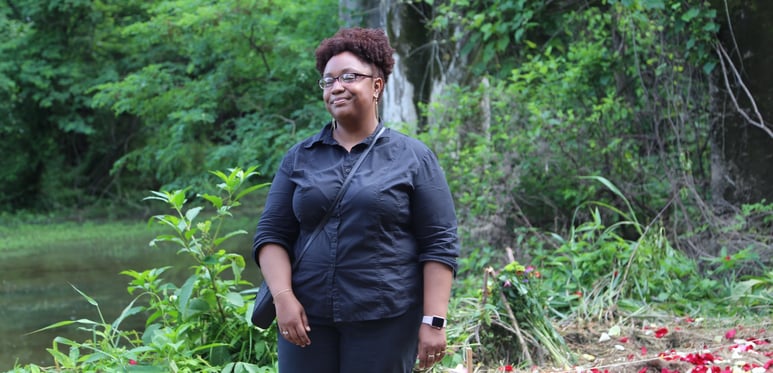
Last year I began a family history project as a way to distract myself from the grief of being an “adult orphan.” My dad passed away 13 years prior and my mom had recently passed away at the beginning of 2016. So much of my identity had been found in my parents, and now being alive without them both was very confusing. I found a unique solace in the research of my ancestors.
I imagined the stories behind the names of these people. What was life like in their time? As I began to funnel through the truth of who I am, I became strangely connected to my dad’s side of the family because I knew so little about them. I knew his mom’s name (my grandmother) was Beatrice Persons, and my great grandfather’s name was Luther Persons. From my research, I found that Luther Persons’ father’s name was Jerry Persons. And they all came from Memphis.
My research soon lost steam and I put the project to the side. But it turned out that someone was looking for me.
A couple of months later, I received an email from Tom Carlson, a retired University of Memphis professor. Two years ago he and some colleagues founded The Lynching Sites Project of Memphis, which aims to identify and memorialize all of the lynching victims in Shelby County. One of the victims was William L. “Ell” Persons. The 100th anniversary of his lynching, where he was brutally burned alive for the alleged murder of a white woman, Antoinette Rappel, was coming up on May 22. They were looking for descendants of his to invite to a memorial service where they, along with Students Uniting Memphis, a youth-led group started by a Facing History classroom, would unveil a historical marker at the site of his murder.
Beatrice Persons, my grandmother, connected my tree to Ell’s.
I assumed there must be some mistake. I wasn’t sure if they had the right person. I had never heard this story but then again, I knew nothing of my Memphis roots. I wasn’t comfortable claiming I was a descendant until I could tie Ell to my great grandfather, Luther. Commemorating Ell’s memory was important—and I wanted to make sure everyone involved got it right.
Ultimately, I got the confirmation I needed in the 1880 census and on Ell’s death certificate: Ell and Luther were brothers, which meant Ell would have been my great uncle.
I knew I had to go to Memphis. As I prepared for the trip, I could not stop thinking about Ell and Antoinette Rappel. I could not get past the suffering that Ell experienced being burned alive or the horror Antoinette must have felt in her last hours. The more I spent doing my own research about the facts of the case, I realized that there were two tragedies. Two murders. Neither human being received justice.
Despite my Memphis roots, I was born and raised in Chicago. When I stepped on Memphis soil for the first time, I was filled with gratitude. I was overwhelmed with emotion throughout the ceremony for what these Facing History students had helped accomplish with the Lynching Sites Project. They brought the Ell Persons story from darkness to light. Their motivation to honor and face this tragic event showed unbelievable courage. They give me hope for the future of racial reconciliation that often seems impossible.
Reconciliation also came in another way that day: I sat next to Laura Wilfong-Miller, a descendant of Antoinette Rappel. Her presence there was an act of courage. When her mother approached me to offer a hug, she said, “I’m sorry,” as if this tragedy was somehow her fault. But on this day, love replaced the hate and violence that ended one man’s life 100 years ago.
I never imagined my little family history project would take on so much life. There were so many things that had to be put into place just perfectly for all of this to play out. It was as if my grief over navigating through life without my parents led me to this moment. It was purposeful and it was triumphant.
Hate tried to silence Ell Persons. But hate didn’t win because I’m still here, alive and breathing and fulfilling my purpose on his behalf. In the end, love wins.
Help your students understand the historical context of lynching and the early struggles against Jim Crow and racism with our lesson, "Connecting the Lynching to the Murder." Part of a four-lesson series about the murder of Emmett Till, it can be used on its own or in conjunction with the the other three lessons. It provides helpful context on how the early anti-lynching movement laid the foundation for the modern Civil Rights Movement.
Photo (courtesy of Michele Whitney): Michele Whitney stands at the lynching site of her Great Uncle Ell Persons on May 21, 2017.


